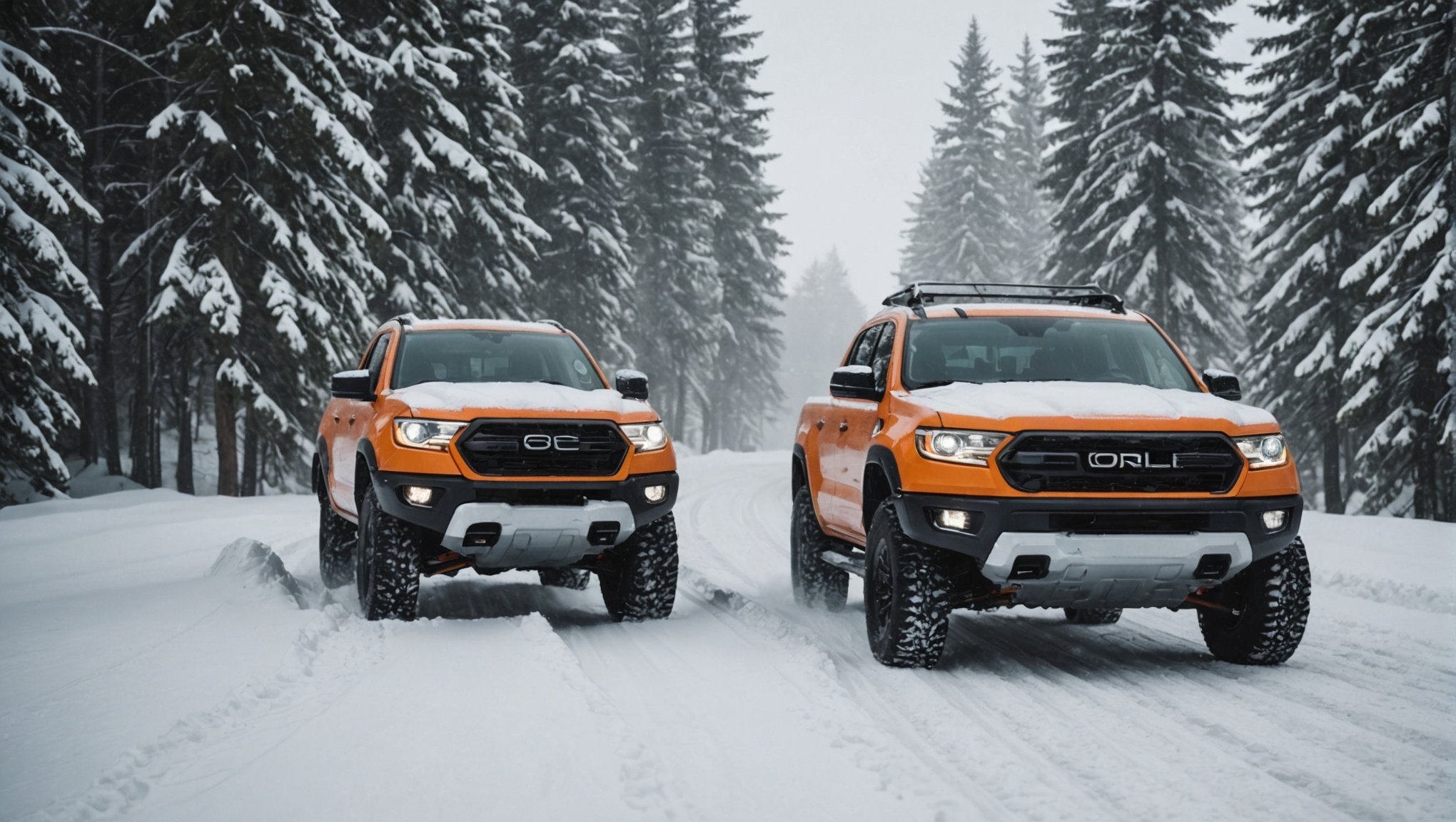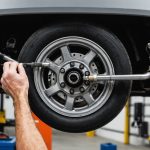Vehicle Maintenance Checks
Preparing your vehicle for winter is crucial to ensure safe and efficient driving. Regular vehicle maintenance is key, particularly for all-wheel-drive vehicles that require extra attention during harsh conditions.
Importance of Regular Maintenance for Winter Readiness
Before the winter season sets in, conduct a thorough check of essential components. Regular maintenance ensures your vehicle is winter-ready, minimizing risks associated with snow and ice. It’s vital for both safety and performance.
Also read : Maximize Your Minivan”s Safety: Expert Tips for Adjusting Airbag Sensitivity Settings
Key Components to Inspect
Key areas to focus on include:
- Brakes: Have them inspected by a professional to ensure they function correctly in slippery conditions.
- Battery: Cold temperatures can reduce battery efficiency. Check for signs of wear or corrosion and test the voltage.
- Lights: Ensure all lights are operational. Replace any dim or burnt-out bulbs to maximize visibility during dark winter days.
Recommended Service Intervals and DIY Checks
Consult your vehicle’s manual for recommended service intervals. This provides guidance on when professional checks are necessary. Additionally, you can perform DIY checks on fluid levels, tire pressure, and tread depth to keep your vehicle in tip-top shape during winter months. Regular checks highlight potential issues before they become significant problems.
Topic to read : Essential Tips for Safeguarding Your Car”s Hydraulic Brake Lines During Regular Maintenance
Tire Selection and Preparation
Selecting the right tires for winter driving is crucial for safety and performance. Winter tires and all-season tires differ significantly in their design and function. Winter tires are specifically engineered to handle snow, ice, and low temperatures. They feature a rubber compound that stays flexible in freezing conditions, combined with a tread pattern designed for maximum grip. In contrast, all-season tires provide a balance of performance in various conditions but might not offer optimal traction on icy roads.
Ensuring the correct tire pressure is essential for maintaining vehicle control, especially in snowy conditions. Cold temperatures can cause tire pressure to drop, so it’s important to check and adjust it regularly. Properly inflated tires improve contact with the road, ensuring better grip and handling.
Another important aspect is tire tread depth. Adequate tread depth is key in preventing slips and slides on icy surfaces. It allows tires to channel snow and water away, maintaining contact with the road. For winter and all-season tires, a tread depth of at least 4mm is recommended for effective traction during harsh conditions. Regularly checking and maintaining this depth ensures your tires perform their best.
Fluid Checks and Additives
Maintaining your vehicle’s performance during winter starts with vigilant fluid checks. Arguably, checking your antifreeze levels is crucial, as it protects the engine from freezing and overheating. Ensure your antifreeze is at the recommended concentration, usually a 50/50 mix of antifreeze and water, and has adequate freeze protection. This mix helps the engine maintain a stable temperature despite freezing conditions.
Speaking of winter requirements, winter-grade washer fluid is a vital consideration. This fluid is formulated to withstand lower temperatures, preventing the reservoir and lines from freezing. It’s also designed to remove salt, grime, and ice from your windshield, ensuring clear visibility.
Engine oil viscosity is another key factor in cold weather. Low-temperature conditions can thicken engine oil, affecting its ability to lubricate engine components efficiently. Thus, choosing the right oil is essential. For winter, a lower viscosity oil, like 5W-30, is recommended for most vehicles, as it ensures the oil flows smoothly even when temperatures plummet.
To sum up, regular checks and timely additions of the right fluids can mean the difference between your car running smoothly or facing issues in the cold. Always consult your vehicle’s manual for specific fluid recommendations.
Safety Gear Recommendations
When navigating winter roads, being equipped with the proper safety equipment is vital. An essential emergency kit for winter travel should include basics such as a first-aid kit, flashlight, and high-visibility jacket. Add to this family of supplies with items like blankets and non-perishable snacks, ensuring comfort and sustenance if stranded.
Winter gear is equally crucial. Opt for insulated clothing and waterproof footwear to guard against harsh conditions. Layering is key: thermals, wool sweaters, and a weather-resistant coat can make a significant difference. As temperatures plummet, having gloves, hats, and scarves available is essential to prevent frostbite.
An often-overlooked detail is maintaining a charged phone, paired with a reliable car charger. In emergencies, communication is imperative; staying in touch with emergency services or loved ones can be lifesaving. Ensure both the driver’s and passengers’ capacity to charge devices, reducing chances of being cut off.
By preparing with these safety gear essentials, drivers can significantly enhance their readiness for unexpected winter complications. These precautions pave the way toward a more secure and reassuring travel experience during the colder months.
Driving Techniques for Snowy Conditions
Navigating through snow-covered roads demands particular attention and know-how. Driving tips that can enhance snow traction and ensure safe winter driving are essential for those in colder climates. One vital technique is maintaining control in slippery conditions – this means knowing how to handle your vehicle smoothly.
When accelerating or braking, do so gently to avoid losing control. Abrupt movements can cause tyres to lose grip, leading to dangerous skids. Remember, steady and smooth are your allies on icy roads.
All-wheel drive systems are beneficial, but understanding their limitations and correct usage is paramount. While they improve traction, especially during acceleration, they don’t necessarily improve stopping capabilities. It’s important to remain cautious, keeping safe distances from other vehicles.
Another key consideration is adapting your driving tips to include scanning the road ahead for potential hazards like black ice. Adjusting your speed according to weather conditions and maintaining a buffer zone between you and the vehicle in front can provide you with ample reaction time.
Overall, snow traction isn’t just about the vehicle you drive but also how you drive it. The respect and understanding of your car’s dynamics can significantly enhance safe winter driving.
Visual Aids and Checklists
Thinking of winter driving can be daunting, but having a winter preparedness checklist can ease these worries significantly. A thorough list should include essentials such as checking tyre tread depth, ensuring the battery is in prime condition, and having a stocked emergency kit. These measures ensure that you’re ready to face potential winter hazards.
Visual guides can greatly assist in ensuring you don’t miss any crucial steps. They offer a clear, step-by-step breakdown of what to check, from fluid levels to emergency supplies. For those who prefer visual learning, these guides can be pivotal, turning a potentially overwhelming task into something manageable.
Consider real-life scenarios where winter preparedness was crucial. A driver stuck in a snowstorm without a fully charged battery or adequate tyre traction would face severe challenges. By following a checklist and inspecting the vehicle visually, such situations can often be avoided. Real-life examples underscore the importance of each step and highlight the potential real-world consequences of neglecting winter preparation.
Incorporating visual aids and detailed checklists into your routine makes the daunting task of vehicle preparation manageable and efficient. This proactive approach not only ensures safety but also boosts confidence when hitting the winter roads.
Real-life Scenarios and Case Studies
Delving into snow travel experiences unveils a treasure trove of valuable insights. Many travellers recount the challenges they face on icy roads, from unexpected skids to whiteout conditions. Real-world driving stories often highlight common mistakes such as underestimating weather changes or neglecting vehicle maintenance. For instance, forgetting to check tyre tread depth is a frequent oversight that can significantly affect grip on snowy surfaces.
In one notable case study, a family was stranded after heavy snowfall due to reliance solely on GPS directions, ignoring local road knowledge. This scenario emphasizes the importance of preparing for winter travel by accumulating local weather and traffic intelligence. From these experiences, practical solutions can be gathered, such as carrying a shovel and kitty litter for traction, and ensuring your vehicle has an emergency kit.
Lessons learned from these snow-related incidents underline the crucial safe practices drivers should adopt. Maintaining a safe following distance and reducing speed in adverse conditions are pivotal. Furthermore, utilizing winter tyres instead of all-season ones can greatly enhance safety. Analysing these real-world scenarios equips drivers with the knowledge to navigate snow travel more safely and confidently.
















